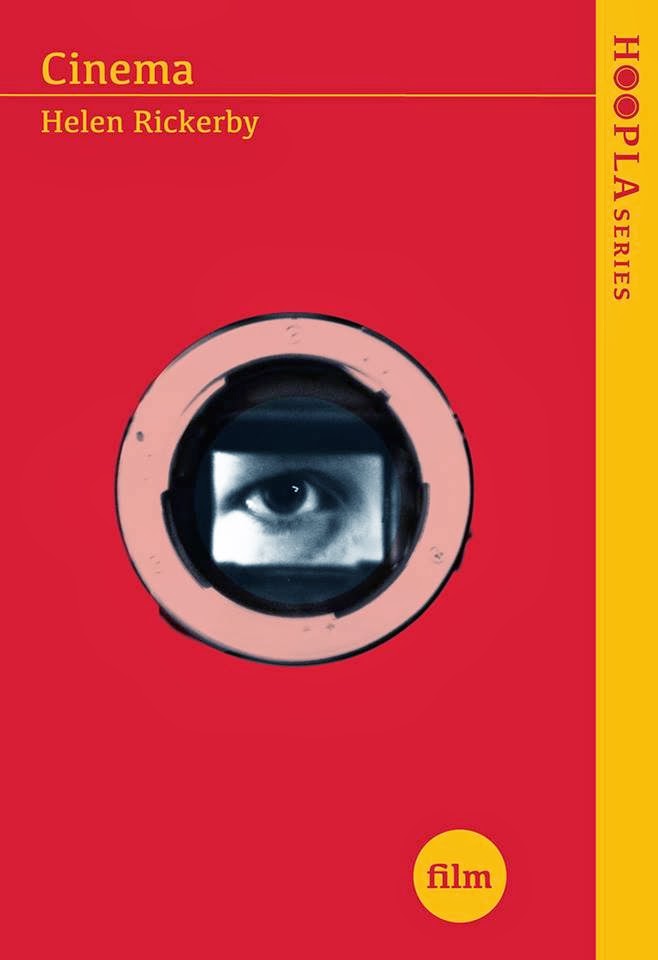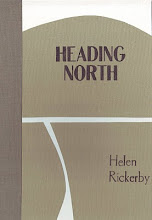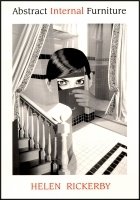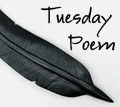Kia ora koutou!!
Howltearoa continues this year, with our second open mic nght on Monday the 5th of May at 7:30pm, at the Southern Cross.
The first Howl of the year, held in April, was really successful with a good turnout, heaps of people keen to contribute to the open mic session and a great set from our special guest and long-time Howltearoa contributor Andy Coombes.
Howltearoa this Monday is an opportunity for anyone wishing to contribute, be it with their own poetry or something by a favourite poet or writer. There will be no special guest this month, so there will be plenty of time for all who turn up wanting to perform.
Howltearoa will continue to be held on the first Monday of each month for the rest of this year. Poetry begins at 7:30pm. Come along and experience and contribute to the best of local poetry and spoken word in Wellington.
30 April 2008
Howltearoa news from the Word Collective
25 April 2008
Enchantress of numbers
But no, it turns out she was after me. She wanted to talk to me about my poetry – well one poem in particular, which she is going to use for her speech and drama exam. As I understand it, this means that she’ll perform it and be asked questions about it.
I am terribly chuffed. I’m always delighted whenever anyone is interested in my work because, let’s face it, not that many people are very interested in poetry.
The poem is ‘Enchantress of numbers’, which is about Ada Lovelace, who was Byron’s daughter and a bit of a mathematician – enchantress of numbers is what computer pioneer Charles Babbage called her. It’s one of the biographical poems that’s going to be in My Iron Spine. It was published in Poetry NZ 32, but I’ve tinkered with it a teeny bit since it was first published. The most up-to-date version is below, and after the poem is a little bit of biographical info.
Enchantress of Numbers
Ada Byron King, Countess of Lovelace
One
On the table
is a dancing girl
made of silver, spun by gears
and cogs she pirouettes
she arabesques
and when she begins to slow
I wind the key again
let her go
My father the poet, my mother
the parallelogram
two lines
that should never have crossed
Passion and
reason, frenzy and logic
It’s no wonder
it ended as it did
Two
She said she was protecting me
from his blood, my blood
and the poison that was waiting there
Sitting at my desk
my books open
she wrapped me, laced me
in numbers, equations
like a whale-bone corset
to keep my back
straight, my spine aligned
and threaded through my mind
little lines of logic
a program for equilibrium
And so you see
it was my mother
who first programmed me
But maybe the software
doesn’t work
I think, in the dark summerhouse
with my tutor
Maybe a line of code
is incorrect
as I feel the lick
of his eyelashes
against my shoulder
He is dismissed
I walk five miles
to find him
but he has already gone
Three
A present from my mother
and today not even
my birthday
I am twenty years of age
I am safely married
I am waiting
for my own first child
I am no longer an accident
waiting to happen
She sends me
something dangerous, something
explosive
Behind my composure
I faint as I tear
the corner of the paper
rip away
the shield, the protection
and there he is
glowing
within the gilt frame
turban knotted around
his noble head
I see in him
my own eyes, my mouth
the cleft of my chin
and I can see
why she kept this
kept him
from me
Four
I never met him, my father
but I grew
in his shadow, in his light
What he was with words
I would be
with numbers
An alchemist, an enchantress
I promised myself
I first saw the dancing girl
in Babbage’s studio
A toy, a fancy
My eyes lighted
on a plainer set of
cogs and wheels
engraved with numbers
The Difference Engine
The other ladies scattered
their tinkling laughter but I
asked, ‘How does it work?’
He told me
and I understood
Five
The Analytical Engine
was harder, because
it didn’t exist
except in our minds
But I can explain it
share it
It will change
everything
I am a prophetess, a seer
In me
the twin streams meet
His blood, not drained
but flowing with her reason
I have watched for it
waited, afraid
of the madness, the badness
the danger, but now
I think I may be
the answer to the equation
Numbers dance
to the beat of the iamb
trochee, spondee
numbers make music
poetry
if you listen
with the right ear
And so you see
I am his daughter
after all
Ada Byron (1815–1852)
Daughter of the poet Byron and his wife Annabella Milbanke. Her mother left Byron when Ada was one month old, believing him mad and immoral. He was never allowed to see Ada again. Fond of mathematics herself, Annabella had Ada trained in maths in the hope it would discipline her away from any poetic or deviant nature she may have inherited from her father. Ada is best known for her notes to her translation of a scientific paper explaining Charles Babbage’s design for the Analytical Engine, a precursor to the computer. She has been called the first computer programmer because one of the notes contains what is generally considered to be the first (albeit theoretical) computer program.
23 April 2008
Jennifer Compton at the Poetry Society
I suspect that people were drawn by a guest reader from overseas, but although Jennifer Compton has been living in Australia for many years, she’s actually a local. She grew up in Rongotai, Wellington – somewhere near the airport if one of her poems was anything to go by.
Jennifer is in Wellington as the Randall Cottage writing fellow, which she applied for because she felt it was time to ‘come home’ for a while.
We were treated to a reading of some of her ‘New Zealand’ poems, which Aussies apparently don’t appreciate as much. A highlight for me was ‘Waikikamukau’ (pronounced why kick a moo cow), about that legendary, archetypal small New Zealand town, which, she said, in her poem is based on Shannon.
Another highlight was a very recent poem, recounting a memory from her childhood. A hard thing to write about, but a very fine poem.
Next month’s guest is going to be Lindsay Rabbitt, who is a writer and multi-media artist based on the Kapiti Coast. He has published poems, essays and short stories. His latest book is These Lives I Have Buried, which was published as part of the Montana essay series, edited by Lloyd Jones and published by his Four Winds Press.
21 April 2008
New Zealand accents
If you do have a look, or even if you don't, make sure to check out the video I mention at the end: ‘New Zealand accent explained‘, by Miss Verstaendnis, a New Zealander living in Germany (presuming you have broadband or your workplace allows you to visit YouTube). It's hilarious and educational. If you're not familiar with the NZ accent - we mostly sound more like she does when she's talking normally rather than when she's demonstrating a NZ accent. This will also help New Zealanders explain why we don't sound like Australians.
Karen, it might make you homesick.
17 April 2008
Putting together a poetry collection
In case anyone else is interested, I thought I'd reuse what I wrote there:
I’m sure there are lots of ways you could successfully put your collection together. But this is how I put together My Iron Spine, which is going to be published later this year.
Of course, I started with the poems. While I was still writing them, I started noticing recurring themes and ideas, and I wrote new poems building on those. I also noticed that they fell into three types: autobiographical, biographical, and poems that were a fantastical combination of both – where I hung out with various women from history (for example ‘Swimming with Virginia Woolf’). At that stage, I wrote some more poems to fill out the last section.
Then the ordering! The first section was easier, in that I was trying to create a (fairly) chronological narrative through the section – beginning with me as a child, ending with me as an adult (more or less). But I also wanted it – and each of the other sections – to have an emotional narrative.
For each section, I kind of pictured in my head a graph, plotting the emotional rise and fall. The first, autobiographical, section begins up high with innocence, heads downwards with experience and disillusionment, but then heads upwards again with a growing sense of identity and hope.
The second section, comprising biographical poems, has a similar emotional structure. The line of the graph doesn’t start so high this time, but it also heads downwards, but fights its way back up with hopefulness.
The third section begins low, but heads up, getting lighter and, again with hope for the future.
A friend told me recently that Sylvia Plath had a similar kind of structure in mind for Ariel (links to an article about the 'restored edition'), in which, after mining the emotional depths, would end on a more hopeful note. When Ariel was published after her death, Ted Hughes changed the order and some of the poems, leaving us with a very different book.
The way I got the poems into order in each of their sections, was to print them all out and kind of shuffle them. I’d start with one, and then pick up another poem, putting it either in front or behind, depending on what felt right, and what fitted with the emotional trajectory I wanted. I did a fair amount of tinkering later, but eventually got something that seemed kind of right.
Then, when I was ready, I gave copies of the manuscript to five friends whose opinions I trusted, who I knew would be sympathetic to what I was aiming for, and who would give me constructive and insightful feedback. I am very lucky to have such creatures. I also gave them a list of questions, including one about the order. They suggested a few switches, for various reasons (eg, a better poem to start the collection with, this poem goes really well next to this one), most of which I followed.
16 April 2008
Jennifer Compton at Poetry Society
The monthly Poetry Society meeting is on next Monday, 21 April, at 7.00pm. It's in the Greta Fernie Room, Leuven Belgian Beer Cafe, cnr Featherston and Johnston Streets.
There'll be the usual friendly open mic, followed by a guest poet.
This month's guest poet is Jennifer Compton, a poet and playwright who sometimes writes prose. She was born in Wellington in 1949 but has spent many years living in Wingello, a small town in Australia. She spent six months in residence at the Whiting Library Studio in Rome in 2006. During this time she was a guest at the Sarajevo Poetry Festival. Her next book of poetry is called Barefoot.
Jennifer is the current resident of Wellington's Randell Cottage.
14 April 2008
Writing again
I’m quite a slow poet at the best of times, but the last couple of years I’d only really been tinkering with the poems that are going to be in My Iron Spine (which will be published later this year) and I had written very little new poetry, and nothing that I particularly liked. But now, it’s as if I’ve remembered how to write again, after having somehow forgotten. It’s very exciting.
Rather than actually remembering how to write, I think I’ve been remembering some habits and circumstances that help me write. During the (almost) year I took off from paid employment, I’d spend my mornings at home working on my attempts at a screenplay and a novel; and in the afternoons I’d wander round (especially if it was sunny), read poetry books and write poetry – usually in cafes. I wrote a lot of poetry that year – virtually all of My Iron Spine.
So the first thing I’ve been doing is stopping off at cafe once or twice a week on my way home, and writing. I’ve found that being somewhere things are going on, but where you don’t have to pay any attention to them, helps make a magical space in my head for poetry. Writing at home is a nice idea, but there are usually too many distractions there: dishes, cooking, emailing, chatting partners or so forth. I always think it will be lovely to write out in my courtyard garden, but when I do I spend at least half my time staring at the weeds and thinking about how I ought to pull them out (though not actually doing it, you understand).
The second thing I’ve remembered from working on My Iron Spine is that typing up poems – and then printing them out and scribbling on them – is an essential part of my writing process. I write my poems initially in my notebook, which I carry around with me almost always (I’ve had a long succession of these, and now know that they must have lined leaves, wiro binding and something pretty on the cover). But I need to transfer the poems out of the book and into the computer – usually tinkering with phrasing and line breaks as I go. Not only does it make it easier to edit, but it also makes it real. Making the poem concrete like that makes it easier to judge. It came as a shock to me when I realised a couple of months ago that I hadn’t typed poems up for over a year.
The third thing that’s got me back on the poetry roll is having a project. I think I work best when I have projects – when my artistic endeavours aren’t just all by themselves but are part of a greater whole. My Iron Spine really got rolling when I figured out that the book was going to be biographical and autobiographical, with the central theme of the ‘iron spine’. My current project is writing poems that take films as a starting point. They’re not usually re-tellings of the film’s story, though a few have been; they’re usually sort of musings on what the film sparks in my imagination. I often work with strong images or symbols from the movie, or what it seems to mean. My first attempts weren’t so great (though hopefully some can be saved with careful crafting, now that I’ve typed them up), but I’m really happy with some of the later ones.
The final thing I’m doing to keep me inspired to write is actually a new thing, which is writing short weekly reports about my writing and then sending them to a friend. She, in turn, is reporting on her writing to me. We haven’t been doing it for very long, but I’m finding it an added motivation – I want to be able to say I’ve done something each week. Also, it will mean that I can look back over them and be pleased with how much I’ve done.
10 April 2008
JAAM news
We plan to publish around August/September. If you’d like to subscribe, check out the information on our Myspace page or Facebook group, or email jaammagazine@yahoo.co.nz.
The Myspace page and Facebook group (thanks Clare!) have been working out really well as a way of letting people know what JAAM is up to. We’re getting a lot of hits on the Myspace page in particular.
If you’re on either of those media, JAAM would be delighted if you would befriend it or join its group.
09 April 2008
Farewell Ruth Dallas, 1919-2008
Online, there's an obituary of Ruth Dallas from the Southland Times, an article on the TV3 website, and posts from Beattie's Book Blog and Tim Jones's Books in the Trees.
06 April 2008
Best New Zealand Poems 2007
I was delighted when someone let me know that while my poem ‘Passion’ didn’t quite make it in, Paula Green liked it enough to mention it in her introduction as one of the ones she would have liked to also include. She said the same about Scott Kendrick’s ‘Gotter Getter Better’, which in my life as a publisher I published in Cold Comfort, Cold Concrete: Poems & Satires – very gratifying.
I was also delighted that three poems published in JAAM made it into the final cut of Best New Zealand Poems 2007: Robert Sullivan’s ‘After the UN Rapporteur Supported Maori Customary Rights’ from JAAM 24, and Richard Reeve’s ‘Autumn’ and Alison Wong’s ‘Reflection on a proposal of marriage’ from JAAM 25. Congratulations to those poets, and indeed all the poets included.
In her introduction, Paula Green mentions JAAM as one of the ‘stalwarts’. Again, I’m delighted (just to completely overuse the word). Everyone involved with JAAM, past and present, take a bow.
03 April 2008
Howltearoa returns
Hello my dear Howlers
It is true, Howltearoa is back for another year, starting this Monday the 7th of April!
Howltearoa
7:30pm
Monday 7th of April
The Southern Cross Bar
Abel Smith Street
open mic and special guest Andy Coombes
In keeping with our tradition, we will have an open mic session as well as a guest: Mr Andy Coombes. A poet of numerous talents and vices, Andy will keep you all well entertained with poetry that features sardonic wit, savage attacks on any misdimeanors by our elected representatives and narratives that may or may not have actually taken place in our fair city of Wellington.
Howltearoa will be on the first monday of each month this year, don't let anyone tell you otherwise.
We look forward to seeing you there.
01 April 2008
'Passion': my Emily Bronte poem
Anyway, here is ‘Passion’; hope you enjoy it.
Passion
A curmudgeonly male critic once said
that Emily Bronte was
clearly a lesbian
‘It’s irrefutable,’ he said
because her words were
so passionate
therefore she was a woman
of strong sexual desire
She never married, never had a boyfriend
and so
obviously
was gay
*
I imagine Emily
with a series of lovers
taking off each other’s
empire lines in
discreet hollows
on the chilly moors
Emily wearing scarlet, but oh
not any more
I imagine the love letters
the fights, things
may have been thrown because
when one has such passion...
*
Emily lived with her sisters
for her thirty-one years
‘She never
made a friend,’ said Charlotte
What to do
with all that passion
Passion was in JAAM 25, and will be in my upcoming collection My Iron Spine. I also just discovered that it wasn't too far off getting in Best New Zealand Poems 2007, which I'm very happy about. More about that later.





